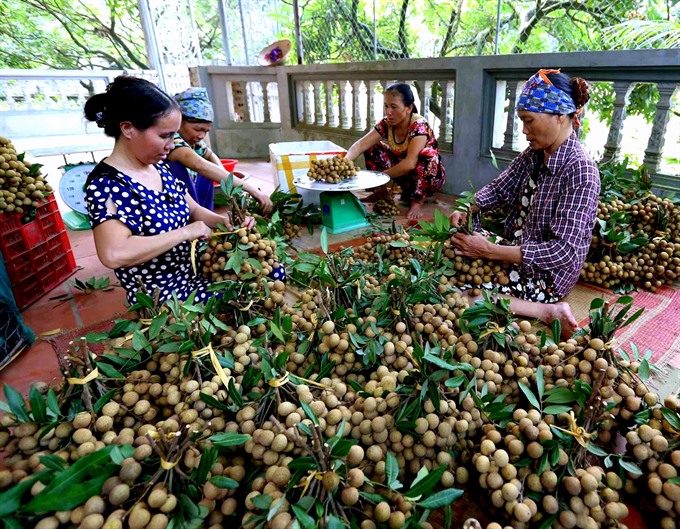 Society
Society

Over the past ten years, rural areas in Việt Nam have been thriving as households’ income and per capita income all witnessed a marked increase, helping to reduce poverty and improve quality of life in the countryside.
 |
| Farmers in the northern province of Hưng Yên sort through harvested longan, a popular Vietnamese agricultural export. — VNA/VNS Photo |
HÀ NỘI — Over the past ten years, rural areas in Việt Nam have been thriving as households’ income and per capita income all witnessed a marked increase, helping to reduce poverty and improve quality of life in the countryside.
Households made 70 per cent more money annually in the past six years, from average VNĐ75.8 million (US$3,240) in 2012 to VNĐ130 million ($5,550) in 2017, while per capita income has risen by 3.49 times in the 2008-17 period.
These are just two of the highlights of the report reviewing 10 years of implementing the 10th Party Central Committee’s Resolution 26-NQ/TW (August, 2008), considered the first thematic resolution to assess and define comprehensive and synchronous solutions to tam nông, or the three agriculture issues, namely rural areas, agriculture and farmers.
In the last decade, agriculture has maintained stable growth across all fronts, with a gradual shift towards quality and added value, clean and organic production – contributing to macro-economic stability and serving as a reliable backbone of the country’s economy on the path of industrialisation.
At a meeting held last week, Deputy Minister of Agriculture and Rural Development Lê Quốc Danh said that the total agriculture export value in the 2008-17 period reached $261.2 billion, boasting an average annual growth of 9.26 per cent.
It is expected that a growth of approximate 9.28 per cent will be achieved this year, meaning the export value of agriculture, forestry and fisheries will reach $40 billion compared to 2017’s $36.6 billion.
Currently, there are 10 products with annual export value over $1 billion, while five products – shrimp, fruit, cashew nuts, coffee and wood products – each reached $3 billion in yearly export value, agriculture deputy minister Doanh said, adding that back in 2008, Việt Nam had only two products crossing the $3 billion mark.
Việt Nam ranked second in Southeast Asia and 15th globally in terms of export value, and is currently exporting to 180 countries and territories.
The number of agrobusinesses jumped 2.93 times, from nearly 2,400 to about 7,000 within 2007-17, with total charter capital of VNĐ213 trillion.
The agriculture ministry said that at the going rate, targets of raising rural incomes by 2.5 times and decreasing rural labourers to 30 per cent of the country’s total workforce might be reached.
Limitations
The report by the agriculture ministry also pointed out ‘unsustainable’ elements in the development of the sector, most notably failed attempts at fully realising a large-scale, internationally accepted centralised farming system.
The country’s agro products were also deemed to be uncompetitive because of businesses’ capital shortage and low application of science-technology which allow for higher quality products, the report said, adding that there are currently too few products with Geographical Indications or distinguished brands.
Despite impressive gains, rural incomes are still no match compared to those of urban areas and the gap keeps getting wider, especially regarding remote mountainous areas.
Seriously degrading rural environment and the prevalence of low-skilled rural labourers (in 2016, only 34.14 per cent of workers in the country were considered trained) persist in the sector, with little optimism in sight.
At the review meeting, Nguyễn Đình Quang, vice chairman of Tuyên Quang Province’s People’s Committee, said the State must have ‘robust’ policies to attract more enterprises and investment into the agriculture sector, saying it would give more opportunities for farmers to gain higher income to enjoy a true transformation.
Nguyễn Văn Sửu, vice chairman of Hà Nội’s People’s Committee, on the other hand, asked for further study on land grabbing and revisions to the land law, in order to make it easier to create large-scale holdings of agricultural land, allowing for large-scale agriculture production. Sửu also wanted more investment into screening centres and processing factories as a means to facilitate the entry of Vietnamese agroproducts into more demanding markets. — VNS




